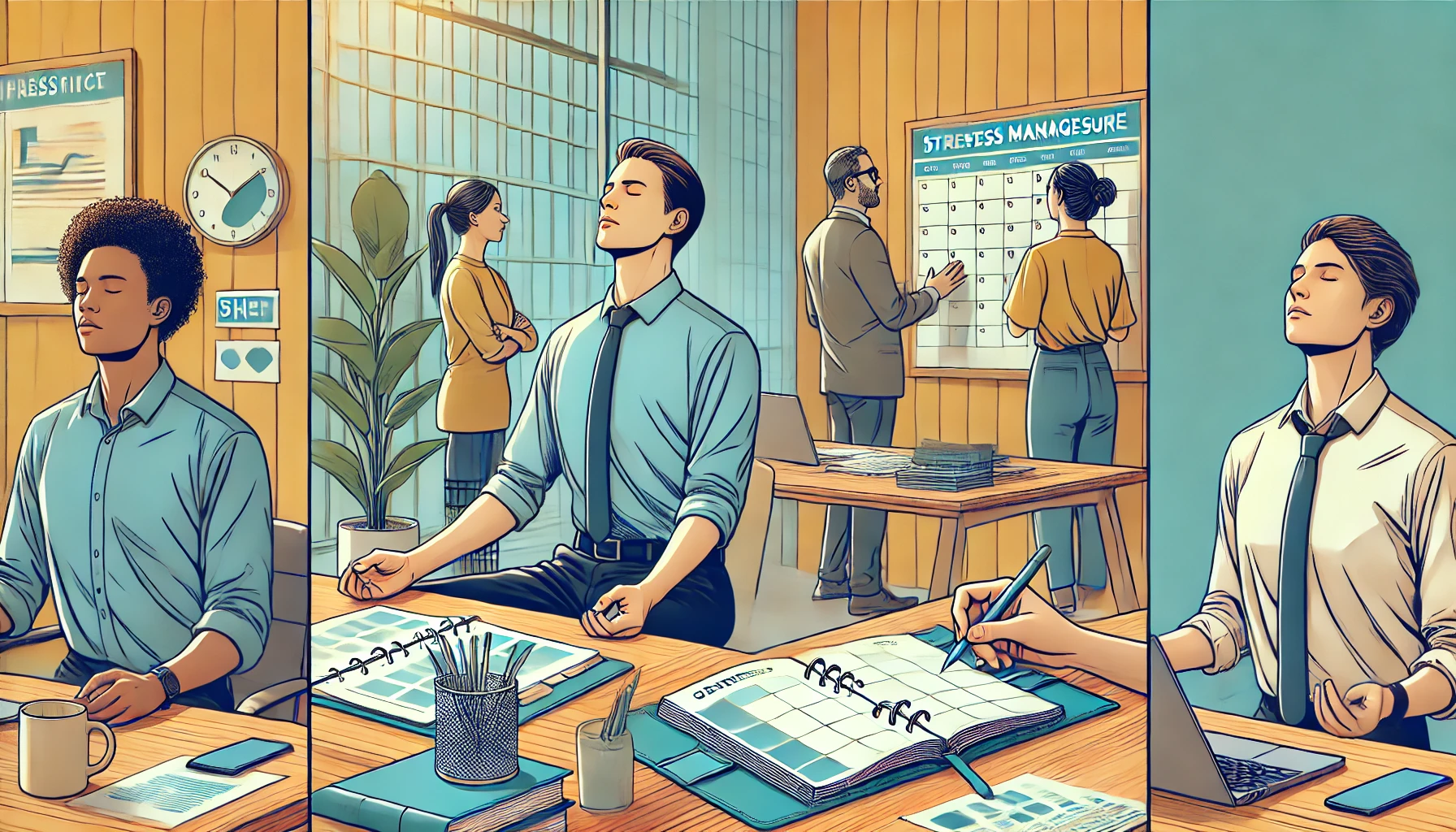Workplace pressure is inevitable, especially in fast-paced environments with tight deadlines, demanding tasks, and high expectations. While some stress can improve performance, too much can reduce productivity, cause burnout, and impact mental health.
Learning to handle workplace pressure effectively allows professionals to stay calm, focused, and efficient even in stressful situations. In this article, we’ll explore six strategies to manage stress and perform well under pressure.
1. Identify Stress Triggers and Take Control
Understanding the root cause of workplace stress helps you respond proactively.
How to identify stress triggers:
✔ Keep a stress journal—note when you feel overwhelmed and why.
✔ Recognize patterns—do certain tasks, deadlines, or people cause stress?
✔ Separate what you can control from what you cannot.
✔ Develop an action plan to address high-pressure situations effectively.
💡 Example: If last-minute deadlines stress you out, request project timelines in advance or improve time management techniques.
2. Prioritize Tasks and Manage Time Wisely
Poor time management often leads to stress and last-minute pressure.
How to stay in control of workload:
✔ Use the Eisenhower Matrix to prioritize urgent and important tasks.
✔ Break big projects into smaller, manageable steps.
✔ Avoid multitasking—focus on one task at a time for better efficiency.
✔ Use time-blocking to allocate focused work sessions.
💡 Tip: Tackling difficult tasks early in the day prevents last-minute stress buildup.
3. Develop a Resilient and Positive Mindset
Your mindset determines how you handle workplace challenges.
How to stay mentally strong under pressure:
✔ Reframe challenges as opportunities for growth.
✔ Avoid perfectionism—focus on progress over flawless execution.
✔ Practice deep breathing and mindfulness to stay calm in tense moments.
✔ Take short breaks to reset and refocus when feeling overwhelmed.
💡 Example: Instead of thinking “I can’t handle this,” say “This is a challenge, but I’ll find a way through it.”
4. Communicate Effectively and Ask for Support
Many professionals struggle in silence, which only increases stress.
How to manage pressure through communication:
✔ Speak up when deadlines are unrealistic—ask for prioritization.
✔ Delegate tasks when possible to prevent overload.
✔ Seek guidance from mentors or managers when facing difficult challenges.
✔ Keep colleagues informed to avoid last-minute surprises.
💡 Tip: Expressing concerns early reduces stress and builds workplace trust.
5. Maintain Work-Life Balance and Self-Care
Overworking leads to burnout and reduced efficiency over time.
How to maintain balance under pressure:
✔ Set clear boundaries—avoid taking work stress home.
✔ Engage in exercise, hobbies, or relaxation techniques after work.
✔ Ensure adequate sleep and proper nutrition for mental clarity.
✔ Take time off when needed to recharge and refocus.
💡 Example: Even in busy times, taking a 10-minute walk can reset your mind and improve performance.
6. Use Stress-Reduction Techniques in Real-Time
Handling stress in the moment prevents it from escalating.
Quick techniques to manage stress at work:
✔ Take slow, deep breaths to instantly calm your mind.
✔ Use progressive muscle relaxation—tighten and release muscles.
✔ Count to 10 before reacting to stressful situations.
✔ Visualize success—imagine completing the task calmly and efficiently.
💡 Tip: Keeping a small stress-relief object (stress ball, essential oil, or relaxing music playlist) can help during tense moments.
Final Thoughts
Workplace pressure is unavoidable, but how you handle it makes all the difference. By identifying stress triggers, prioritizing tasks, maintaining a resilient mindset, communicating effectively, balancing work-life responsibilities, and using stress-reduction techniques, you can perform well even in high-pressure situations.
Start applying these strategies today and turn workplace pressure into professional growth! 🚀

